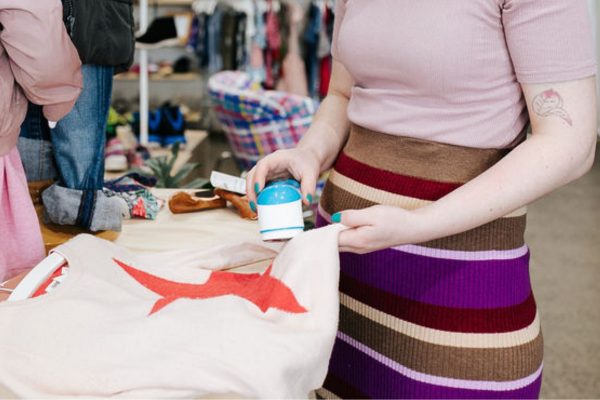
Like it or not, the cooler weather has definitely arrived, and with it, knit-wear, cosy jackets, beanies and boots!
We all know how quickly children outgrow their clothes, especially those oh-so-important winter warmers. But what if we told you that these clothes could last longer, not just for your child, but for future wearers too?

Master the Art of Laundry
First things first, understanding the right way to wash these winter essentials can work wonders.
Knitwear often needs a gentle hand-wash to maintain its cosiness, and a hand-wash is definitely the best way to avoid disasters! A super gentle machine cycle can work just as well, and is probably more practical when you have little ones, but just make sure the temperature is set to cold. Anything with wool fibres will shrink in warm water. Always make sure to use wool-wash or delicate detergents, because your usual laundry liquid will strip the natural oils in protein-based fabrics, ruining their soft finish. As someone who has felted cashmere and turned adult-sized jumpers into toddler-sized ones, take extra care because it is soooo sad when your fave garment is no longer wearable!
Winter coats should be washed separately and as infrequently as possible. Spot clean minor stains to extend the time between washes. Many coats are dry-clean only, and usually it's best to follow the care label!
Puffer jackets and vests on the other hand seem to do just fine in a gentle machine wash, using wool wash if they have a down filling (again, protein-based fibres don't do well with enzyme-based detergents!) Once they're all clean, a quick burst in the dryer will puff them back up and they'll look as good as new!
Repairs
The old adage: a stitch in time saves nine still holds true, but what do you do when it's just not that easy?
Knitwear mends require a keen eye to make sure you catch any loose yarn, or dropped stitches, because if you leave any loose ends the hole will just get bigger! A lint remover is the perfect tool to make pilled knits look as good as new (I don't care if Kim Kardashian rocked up to the Met Gala in a pilled cardigan, pilling will never be a good look  ).
).
 ).
).
Rip-stop nylon like the shell material on puffer coats does not like to be mended with a needle and thread. The only solution (and it isn't perfect) is to patch holes with tenacious tape. It's basically the stuff they use to mend tents, and it's a great way to stop a small hole getting worse.

Storage Solutions to Swear By
When winter says goodbye, how you store these items will determine their longevity.
Most importantly, to prevent creepy crawlies and icky smells, always clean and dry items thoroughly before storage.
Keep clothing in a cool, dry place away from direct sunlight. Vacuum-sealed bags can be a lifesaver for bulky items like coats and boots, and clearly labelled tubs will help you find what you need when the season rolls around again.
The Longevity Pay-Off: More Than Just Monetary
The Waste & Resources Action Programme (WRAP) reveals that extending the life of clothes by just nine extra months can reduce carbon, water, and waste footprints by around 20-30% each. Now, that's a win for Mother Earth too!

Share Your Repair and Re-Wear Triumphs!
Do you have a quirky trick to remove stubborn mud stains? Found a clever way to store bulky winter boots? Let us know!
Let's help each other extend the life of our kids' winter gear, one preloved item at a time. 


